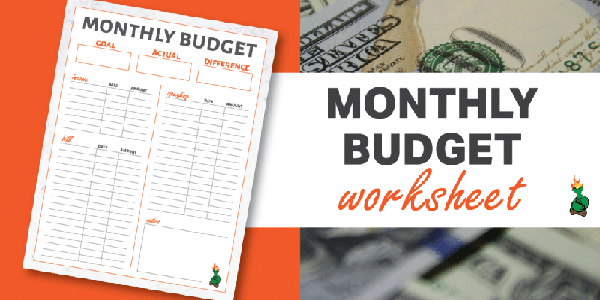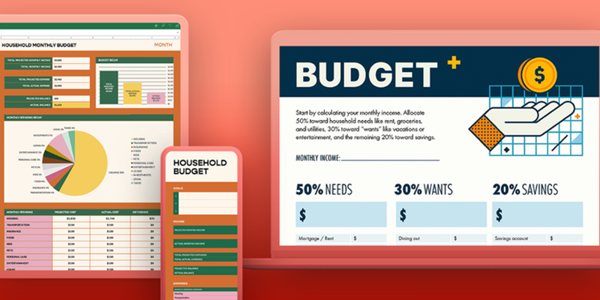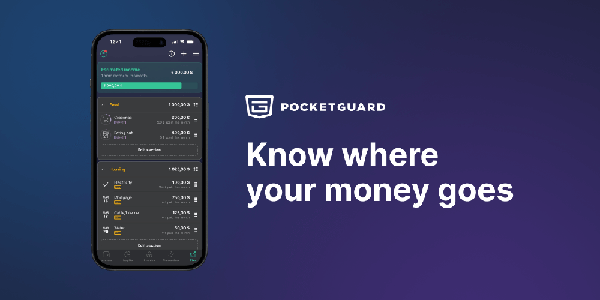How To Create a Budget And Save Money (With Free Template)

Budgeting and saving are key to financial stability, but overspending and unexpected expenses often complicate plans. By addressing these pain points, you can steer their financial journeys toward success while establishing realistic goals.
Common Difficulties and Missteps in Saving Money
When it comes to saving money, several widespread pitfalls can hinder progress. Here are a few typical mistakes people make in their saving endeavours:

Focusing exclusively on cutting expenses rather than boosting income: Many individuals believe that the only way to save money is by slashing their spending. While it is crucial to cut unnecessary costs, increasing revenue through side hustles or investment opportunities can lead to a more sustainable financial improvement and growth.
Overlooking small purchases that can accumulate: Routine purchases, like daily coffee runs or small snacks, often seem trivial. Still, they can compound to significant amounts over time. According to the Bureau of Labour Statistics, Americans typically spend over $3,000 annually on dining out.
Failing to effectively track spending habits: Without diligent monitoring, it becomes effortless to lose sight of spending patterns. Research indicates that approximately 60% of Americans do not budget or track their expenses, resulting in overspending and inadequate savings.
By acknowledging these common missteps, you can better navigate their financial landscape and develop effective habits that contribute to their savings objectives.
Effective Saving Strategies from Financial Experts
Kickstarting a successful savings journey involves establishing a clear and actionable budget. Financial experts recommend compiling a comprehensive list of all income sources, along with a detailed breakdown of monthly expenses. This transparency will enable you to see exactly where your money goes, revealing areas where potential cost savings can be made.
After crafting your budget, it’s vital to set clear and specific saving goals. Whether it's a dream vacation, a new vehicle, or building an emergency fund, defining your objectives will keep you motivated and focused on your financial aspirations.
Furthermore, automate your savings to simplify the process. Financial experts typically advise setting up direct deposits that move a specified fraction of your paycheck directly into a savings account each month. This approach contributes to seamless savings, minimising the temptation to spend those funds.
Additionally, consistently reviewing your financial strategies is essential. Experts suggest monitoring your budgeting and savings progress at least once a month. This proactive measure helps assess which methods are effective, where adjustments are necessary, and allows you to celebrate your progress, reinforcing positive financial habits that pave the way for lasting savings success.
Recommended Budget Management Apps
In today's digital age, managing personal finances has become significantly easier with the aid of various budgeting apps. Here are three popular options, each catering to different budgeting needs:
1. Mint (Free)
Mint is a widely recognised budgeting platform known for its user-friendly design. It enables users to seamlessly connect their bank accounts, credit cards, and investment portfolios. Mint offers automatic tracking of spending across various categories while providing tailored insights into spending habits to identify potential areas for improvement. This app is perfect for those seeking a straightforward and automated budgeting tool.
2. You Need a Budget (YNAB) (Paid, $14.99/month or $98.99/year)
YNAB takes a unique approach by advocating for proactive budgeting practices. Users are encouraged to assign every dollar they earn to specific expenses or goals, promoting financial awareness and control. With comprehensive tracking and reporting functionalities, YNAB helps users adhere rigorously to their budgets, making it an excellent choice for those committed to breaking the paycheck-to-paycheck cycle.
3. PocketGuard (Free)
PocketGuard simplifies budgeting by showcasing spending against one's income. It offers a clear overview of available funds after accounting for necessary expenses, bills, and savings goals. This app is particularly beneficial for individuals focused on managing discretionary spending, ensuring all financial obligations are met. With its intuitive interface, PocketGuard is particularly great for visual learners who prefer concise financial management.

These apps present unique features that cater to various budgeting styles—whether you seek automated analytics, proactive management, or a simplified tracking experience.
Utilising Budget Templates for Effective Financial Management
Employing budgeting templates can significantly streamline the financial management process. An excellent resource for managing your monthly budget is the Monthly Budget Template from Vertex42 . This downloadable Excel sheet is designed to help you effortlessly track your income and expenses, providing visual aids to analyse your spending behaviours.
For users who prefer an annual overview, the Annual Budget Template from Smartsheet is invaluable. This template helps you plan your financial goals for the entire year, providing insights into your overall financial health.
To maximise the effectiveness of these templates, begin by entering your expected income and fixed expenses. Regularly update the documents with actual expense data to identify trends, modify spending habits, and align with your financial goals. A consistent review of these budgets fosters the development of sound financial practices over time.
Start Your Journey to Financial Control
The journey toward mastering budgeting is pivotal for achieving financial stability. Initiate your path today by downloading free budgeting templates—your blueprint to improved economic health. Empower yourself with the essential tools for effective saving and take charge of your financial future. It's time to start budgeting!









